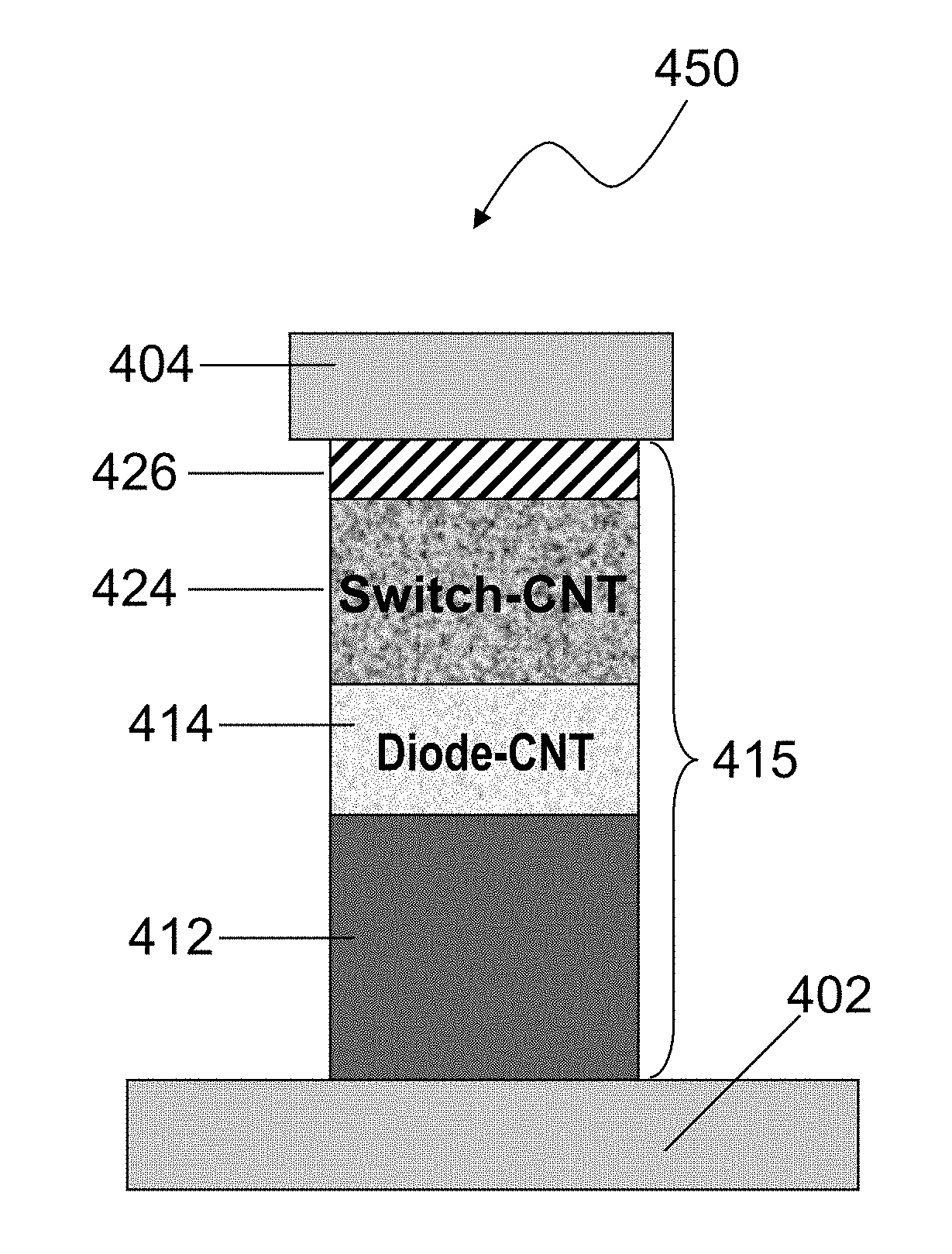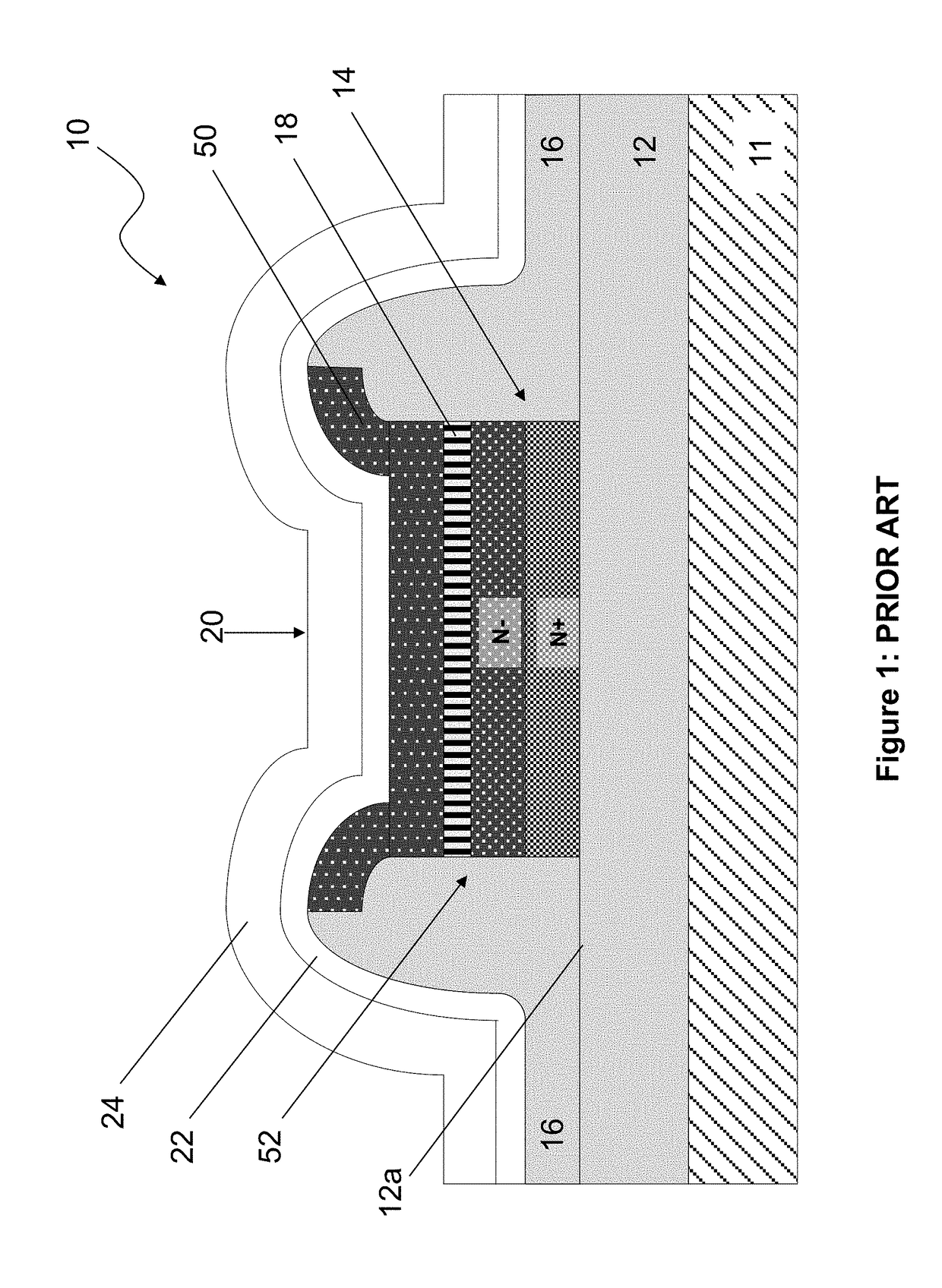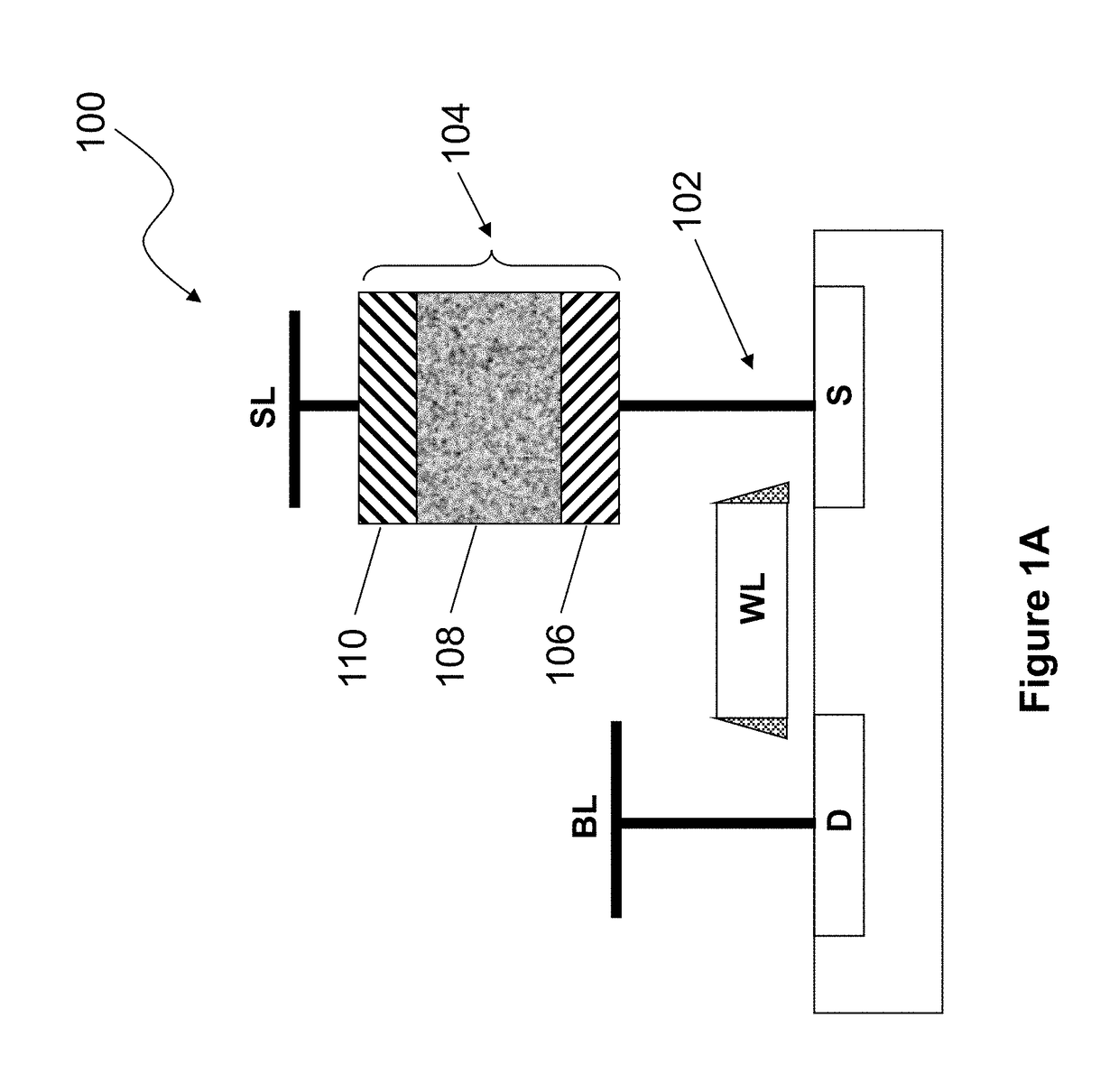Resistive Change Elements Incorporating Carbon Based Diode Select Devices
a technology of resistive change elements and select devices, which is applied in the direction of digital storage, semiconductor devices, instruments, etc., can solve the problems of low fabrication cost and very little power consumption
- Summary
- Abstract
- Description
- Claims
- Application Information
AI Technical Summary
Benefits of technology
Problems solved by technology
Method used
Image
Examples
Embodiment Construction
NRAM and Cross Point Memory Cells
[0169]The present disclosure is generally directed toward nonvolatile resistive change memory cells (or elements) forming 1-R memory cells in a cross point cell configuration, approximately 4 F2 in area, with cell select and nonvolatile storage functions combined in a single element. Nonvolatile resistive change memory elements using carbon layers as storage elements can form cross point nonvolatile resistive memory elements. In the present disclosure, the term carbon layer is defined as any allotrope of carbon, excluding amorphous carbon.
[0170]To elaborate further, a carbon layer as referred to herein for the present disclosure includes a layer of multiple, interconnected carbon structures (such as, but not limited to, carbon nanotubes, graphite, buckyballs, and nanocapsules) formed in a layer such as to provide at least one electrically conductive path through the layer. The carbon layer can be, for example, a nanotube fabric (as described in detai...
PUM
 Login to View More
Login to View More Abstract
Description
Claims
Application Information
 Login to View More
Login to View More - R&D
- Intellectual Property
- Life Sciences
- Materials
- Tech Scout
- Unparalleled Data Quality
- Higher Quality Content
- 60% Fewer Hallucinations
Browse by: Latest US Patents, China's latest patents, Technical Efficacy Thesaurus, Application Domain, Technology Topic, Popular Technical Reports.
© 2025 PatSnap. All rights reserved.Legal|Privacy policy|Modern Slavery Act Transparency Statement|Sitemap|About US| Contact US: help@patsnap.com



